Solve x + 2 = 6
A
x = 3
B
x = 4
C
x = 6
D
x = 8
| − | 2 | = | 4 |
| x | − | 2 | = | 4 |
| x | = | 6 |
| Because: | |
| it is easier to write "x" than drawing empty boxes (and easier to say "x" than "the empty box"). | |
| if there are several empty boxes (several "unknowns") we can use a different letter for each one. |
| We want to remove the "-2" | To remove it, do the opposite, in this case add 2: | Do it to both sides: | Which is ... | Solved! |
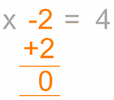 |  |
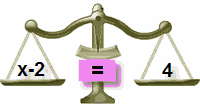 |
| In Balance |
| Add 2 to Left Side |
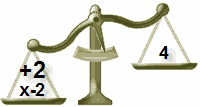 |
| Out of Balance! |
| Add 2 to Right Side Also |
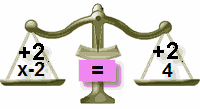 |
| In Balance Again |
| To keep the balance, what we do to one side of the "=" we should also do to the other side! |
| x | + | 5 | = | 12 |
| Start with: | x + 5 = 12 |
| What we are aiming for is an answer like "x = ...", and the plus 5 is in the way of that! We can cancel out the plus 5 by doing a subtract 5 (because 5−5=0) | |
| So, let us have a go at subtracting 5 from both sides: | x+5 −5 = 12 −5 |
| A little arithmetic (5−5 = 0 and 12−5 = 7) becomes: | x+0 = 7 |
| Which is just: | x = 7 |
| Solved! | |
| (Quick Check: 7+5=12) | |

| And once you learn some of the "tricks", it becomes a fun challenge to work out how to use your skills in solving each "puzzle". |  |


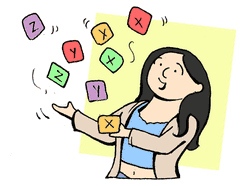

Numbers Directed Numbers Many of the numbers we use represent situations which have directions as well as size The numbers which ha...